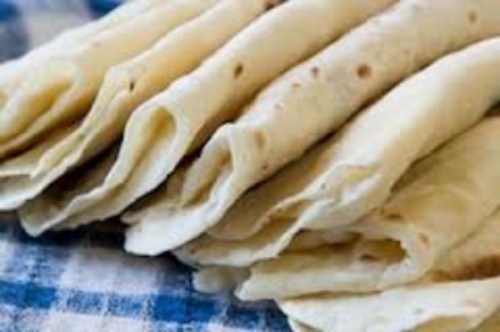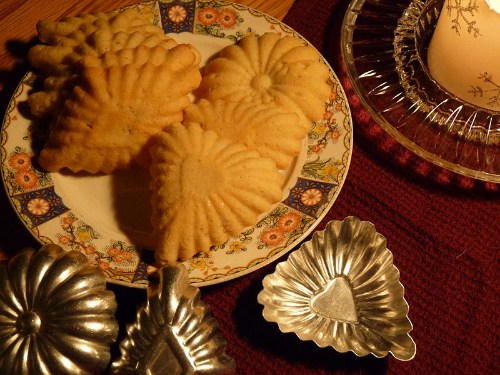
I’m happy to welcome dear friend and award winning author Margo Sorenson back to Alphabet Soup today. 🙂
The good news is that her middle grade historical novel, Tori and the Sleigh of Midnight Blue (first released in paperback back in 2003), is now available as an ebook!
 Eleven-year-old Tori and her family are struggling with the Great Depression in North Dakota, and the death of her beloved Papa has been the severest blow of all. To aspiring writer Tori, everything is changing for the worse—her friends are acting too grown-up, and her little brother Otto invades her privacy. When a Norwegian bachelor-farmer begins courting Mama, Tori writes in her journal that her life will be ruined. What will Tori discover about forgiveness and acceptance as she tries to keep her life from changing?
Eleven-year-old Tori and her family are struggling with the Great Depression in North Dakota, and the death of her beloved Papa has been the severest blow of all. To aspiring writer Tori, everything is changing for the worse—her friends are acting too grown-up, and her little brother Otto invades her privacy. When a Norwegian bachelor-farmer begins courting Mama, Tori writes in her journal that her life will be ruined. What will Tori discover about forgiveness and acceptance as she tries to keep her life from changing?
I enjoyed learning about Scandinavian customs through this beautifully written novel, which reminded me of childhood favorites like All-of-a Kind Family and the Little House Books, where family ties, simple pleasures and a strong sense of community sustain the characters through difficult times.
In the chapter “Missing!”, Tori reluctantly helps her mother roll lefse for Thanksgiving. She usually loves making the traditional flatbread, but this would be their second Thanksgiving without Papa, and besides, she was angry that Mama had invited suitor Bjorn Oppestadt to dinner. How dare she? He wasn’t family!
Today, Margo talks about rolling lefse with her own family. It sounds like such delicious fun. Adopt me, please :).
* * *

♥ GUEST POST BY MARGO SORENSON ♥
We all know how sharing the preparation of food and meals brings people together, and when the food is a traditional, cultural dish, with all the attendant stories surrounding it, the meal truly becomes an occasion to remember and creates another special memory in turn.
For generations, my husband’s Norwegian family has rolled lefse, a tortilla-like thin, soft flatbread made of potatoes. Our daughters rolled it from the time they could stand, and now our granddaughters roll it, as well. Even before I was married, I was instructed that “You will learn to roll lefse,” and it was non-negotiable! Rolling lefse takes at least twenty-four hours from start to finish, and the actual rolling process takes about three hours to roll two dozen lefse, leaving your kitchen looking as if a flour bomb went off!

The communal hilarity and bonding created by rolling lefse is legendary. Telling family stories and jokes while rolling lefse are part of the tradition and bring people together. Non-Norwegians get a lot of enjoyment out of the occasion and look forward to being able to participate in the next lefse-rolling extravaganza. Anywhere you find someone with even just a smidgen of Norwegian heritage, you can hear the stories about lefse-rolling and check out each recipe variation. Everyone always has his or her own special recipe, handed down through generations. A lefse griddle, a special lefse rolling pin, and a lefse turner are all necessary pieces of equipment, too. Adding a little wine-drinking can only add to the fun and helps ease the anguish of “Oh, no! Another wet spot on the pastry cloth!”


In addition to rolling lefse, other traditional Norwegian dishes served mostly during the holidays are rommegrot (rice pudding – with a lucky almond hidden inside for one lucky recipient to have good luck in the coming year), lutefisk (the dreaded cod soaked in lye and cooked with butter), fattigmand (crisp, fried cookies), and sandbakkels (cookies baked in special tins). During the preparation and consumption of all these, the family and friends enjoy each other’s company and revisit past stories of gatherings and many cultural tales.

North Dakota Institute of Regional Studies (North Dakota State University) knows what this cultural bonding is all about – keeping the traditions alive for each succeeding generation. When they said they would publish my middle grade historical novel, TORI AND THE SLEIGH OF MIDNIGHT BLUE, I was elated. Now, future generations of our family and other’s families would be able to read about these traditions and about a special way of life. Of course, Tori and her mother roll lefse in the book! Just recently, to my delight, NDIRS released TORI as an ebook, so the digital age kids would be able to read about a past way of life that should be preserved. Although Tori lives in North Dakota during the Depression, the struggles she encounters are the same ones that so many young readers endure today. The setting may be different, but young readers’ hearts and souls and dreams are the same.

If you have special cultural traditions associated with meals and food, I know you will want to be sure you pass those on to family and friends. The rich cultural past may disappear unless we carry the torch forward. Celebrate family and friends by keeping tradition alive!
* * *
You can see why Margo is an author after my own heart. Tori and the Sleigh of Midnight Blue is a great summer read that will leave you with a good warm feeling.
Margo has agreed to answer any questions you may have about lefse, Norwegian food/cultural traditions, or her book, so fire away!
* * *

TORI AND THE SLEIGH OF MIDNIGHT BLUE
by Margo Sorenson
published by North Dakota Institute of Regional Studies, May 2014
Historical Fiction for ages 8-12, 82 pp.
*Cool themes: Scandinavian culture, North Dakota, Norwegians, Great Depression, Family, Immigrants, Friendship
**Available in paperback or new ebook
——————————————-
Copyright © 2014 Jama Rattigan of Jama’s Alphabet Soup. All rights reserved.

What a fascinating tradition! I am curious why it takes 24 hours (is it a yeasted dough?) and do you eat the lefse with a filling? Tori and the Sleigh of Midnight Blue sounds like a lovely book and I just might have to read it. Congrats on the ebook release!
LikeLike
Thank you! It takes 24 hours to solidify the potato dough so you can roll it out, and you eat lefse with butter and sugar and cinnamon, too. 🙂
LikeLike
Congratulations to Margo on the e-book release. I would like to see lefse-rolling 🙂 Those sandbakkel tins are so cute!
LikeLike
Mange takk, Tabatha! 🙂
LikeLike
I have tried and failed to learn this despite my Norwegian heritage! Fortunately I am exceptionally good at spreading them with butter, cinnamon and sugar and consuming them! Thank you for a terrific post.
PS I think Ingebretesen’s offers classes on lefse baking/rolling sometimes?
LikeLike
It’s always a challenge, Cathy, believe me! Check out Ingebretsen’s — and maybe you can find a tutorial on YouTube! Mange takk!!
LikeLike
Bare hyggelig!
LikeLike
I love all the funny words you two are using :).
LikeLike
Stop making me hungry! My mom is good friends with a Norwegian lady. That is why my name is spelled “Erik” instead of “Eric”. 🙂 I want to try some lefse now! 😀
LikeLike
Oh, didn’t know that about you, ERIK! Pretty Kool. 🙂
LikeLike
Erik, indeed you should try some lefse! 🙂
LikeLike
Thanks! 🙂
LikeLike
Hi, Margo and Jama,
I loved this blog, and it reminded me of Dumpling Soup, a favorite children’s book of mine. Margo, Jama is a HS classmate of mine. Small world, yeah?
Look forward to reading Tori and the Sleigh of Midnight Blue!
Jama, thanks for having Margo on as a guest blogger.
LikeLike
Small world, indeed! I can’t get over it! What a treat!
My thanks to Jama, as well, who is such a gracious blog host! Aloha!
LikeLike
Hi Jan!
I think I remember Margo mentioning visiting your school before. It *is* a small world, especially when it comes to Hawai’i people. You will enjoy the book — such a pleasure to read. 🙂
LikeLike
I have a friend who makes lefse twice a year from her grandma’s recipe – I keep threatening to try and make it, but that whole “flour bomb” thing is somewhat off-putting! Ah, well, with butter and jam it’s worthwhile in the end. A lovely sounding book and a lovely cultural offering …now I’m hungry.
LikeLike
The little glass of wine (or two) does help with the flour bomb thing! 😉 Thank you for stopping by!
LikeLike
I’m happy to be of Norwegian heritage. Lefse making is an enjoyable family activity each holiday season. I must say, that to have one hot off the griddle with butter and sugar is amazing! Thanks, Margo, for sharing TORI with young readers! It reminds me of what my great-grandparents and their children faced while homesteading in SD.
LikeLike